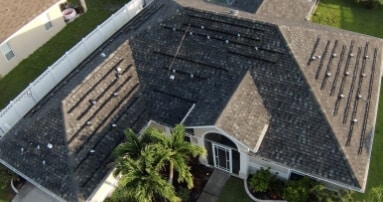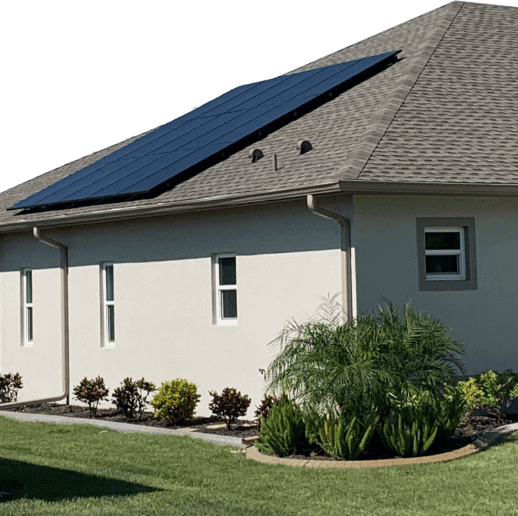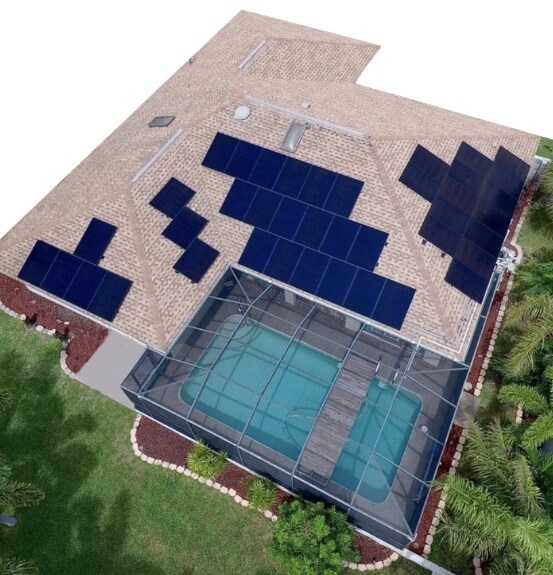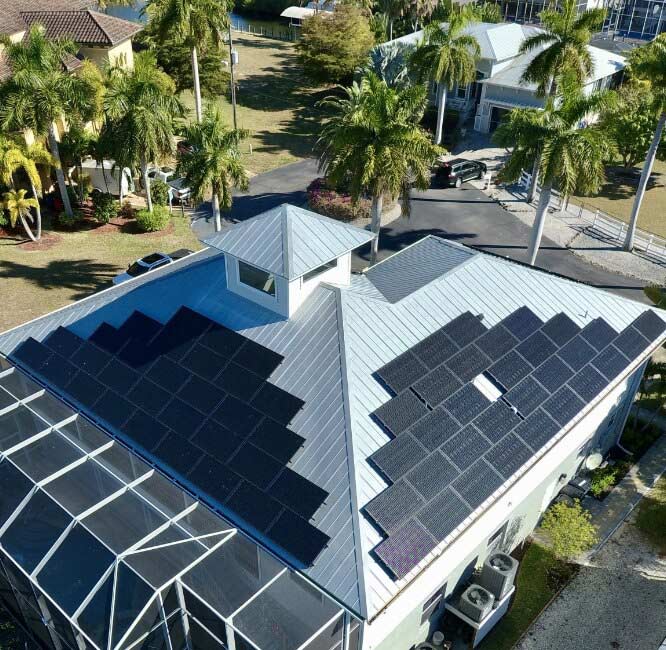
SOLAR ELECTRIC INSTALLATION
Advances in solar mounting equipment enable installers to work with almost all roofing materials, including Asphalt Shingles, Concrete Tile, 5V Metal, Standing Seam Metal, TPO, and Modified Bitumen.

You’ve no doubt heard of solar power, but have you honestly thought about what it can do for you? Imagine having the ability to power your home with little more than a solar panel and, of course, the sun. Photovoltaic Solar has come a long way since it was first introduced to the public, and with lots of the different types of collectors and inverters, you not only have a fantastic way to cut utility costs, but you’re also helping make a difference in our environment.
So, how does it work? Well, on a very basic level, the solar panel (also known as a solar module) is typically installed on rooftops of homes or on open land (ground-mounted) that has a great amount of sunlight exposure. Throughout the day, the cells in the panel’s film lining are charged by the sun’s rays and then sent to the inverter, which turns into the same electricity you normally use around the house.
The “Photovoltaic Effect” is a process that generates an electric current in a photovoltaic cell when it is exposed to light. A panel consists of a layer of Silicon Cells, a semiconductive material, with a metal frame and encased in a glass unit. Upon exposure to the sun’s rays, photovoltaic cells initiate a flow of electricity inside the panel. Groups of panels are connected by wires that direct the flow into an inverter system which converts the direct current (DC) electricity into alternating current (AC) electricity and can be tied into the utility grid. Alternatively, AC electrical flow can be fed into the electrical panel whereby is available for use inside the building!
Solar Energy Solutions of America is a leading provider of Photovoltaic Solar services in SW Florida. We perform installation and maintenance and offer a wide variety of options to help residents and businesses make the transformation to solar power.


Some homes are more ideal than others for the installation of a Solar Electric System. There are several questions homeowners may consider when determining the feasibility of moving forward:
Does your roof receive ample sunshine?In the vast majority of cases here in SW Florida, roofs are mostly unblocked by palms and other trees. In any case, your roof does not require perfect sun exposure to provide ample benefits. Solar panel installation can also be performed on ground mounts, carports, and even porches and fences.
Is your roof getting old?Solar panels are incredibly durable and can outlive new roofs, so a homeowner may want to consider replacing an older roof prior to moving forward because the costs related to uninstalling and reinstalling the panels can be burdensome.